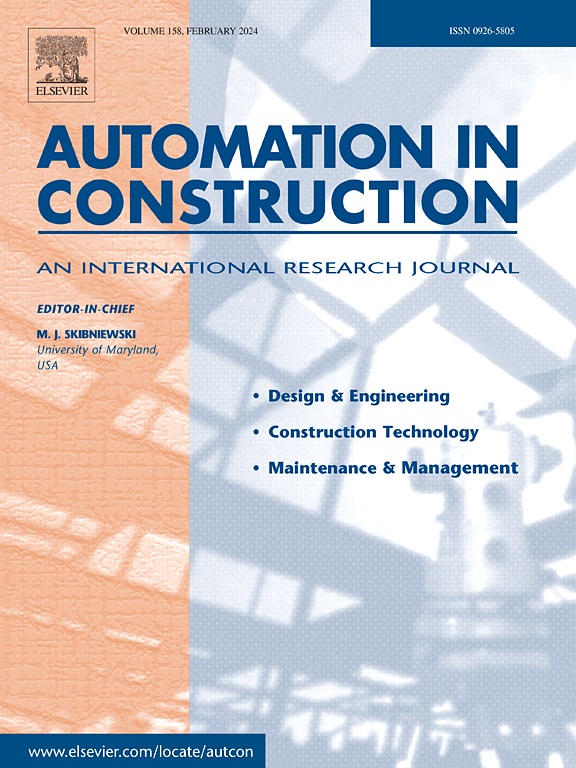Semantic BIM enrichment using a hybrid ML and rule-based framework for automated tenement compliance checking
IF 9.6
1区 工程技术
Q1 CONSTRUCTION & BUILDING TECHNOLOGY
引用次数: 0
Abstract
Semantic enrichment enhances BIM models by extracting structured information, improving their applicability for Automated Code Compliance Checking. Rule-based methods rely on well-defined conditions but struggle with tasks like space classification, where explicit checking rules are unavailable. Meanwhile, ML-based classification introduces adaptability but faces liability challenges due to misclassifications. This paper proposes a hybrid framework integrating ML for space classification and rule-based inferencing for tenement identification. The approach ensures that ML automates preprocessing, improving classification through meticulous feature engineering, while rule-based reasoning guarantees logical consistency during verification. Validated using real-world datasets from residential projects in Mumbai, India as a case, the ML-based space classification component achieves an F1-score of 0.85 and accuracy of 0.86, demonstrating its effectiveness. The deterministic tenement identification process delivers error-free results for various dwelling configurations, making it highly suitable for verification workflows. This study advances scalable BIM-based compliance systems by refining semantic enrichment methodologies for future applications.
使用混合ML和基于规则的框架进行自动房屋合规性检查的语义BIM丰富
语义丰富通过提取结构化信息来增强BIM模型,提高其对自动代码遵从性检查的适用性。基于规则的方法依赖于定义良好的条件,但在空间分类等任务中遇到困难,在这些任务中没有明确的检查规则。同时,基于ml的分类引入了适应性,但由于分类错误而面临责任挑战。本文提出了一个将机器学习用于空间分类和基于规则的推理用于单元识别的混合框架。该方法确保ML自动化预处理,通过细致的特征工程改进分类,而基于规则的推理保证验证过程中的逻辑一致性。以印度孟买住宅项目的真实数据集为例进行验证,基于ml的空间分类组件的f1得分为0.85,准确率为0.86,证明了其有效性。确定性的公寓识别过程为各种住宅配置提供无错误的结果,使其非常适合验证工作流程。本研究通过改进未来应用的语义丰富方法,推进了可扩展的基于bim的遵从性系统。
本文章由计算机程序翻译,如有差异,请以英文原文为准。
求助全文
约1分钟内获得全文
求助全文
来源期刊

Automation in Construction
工程技术-工程:土木
CiteScore
19.20
自引率
16.50%
发文量
563
审稿时长
8.5 months
期刊介绍:
Automation in Construction is an international journal that focuses on publishing original research papers related to the use of Information Technologies in various aspects of the construction industry. The journal covers topics such as design, engineering, construction technologies, and the maintenance and management of constructed facilities.
The scope of Automation in Construction is extensive and covers all stages of the construction life cycle. This includes initial planning and design, construction of the facility, operation and maintenance, as well as the eventual dismantling and recycling of buildings and engineering structures.
 求助内容:
求助内容: 应助结果提醒方式:
应助结果提醒方式:


